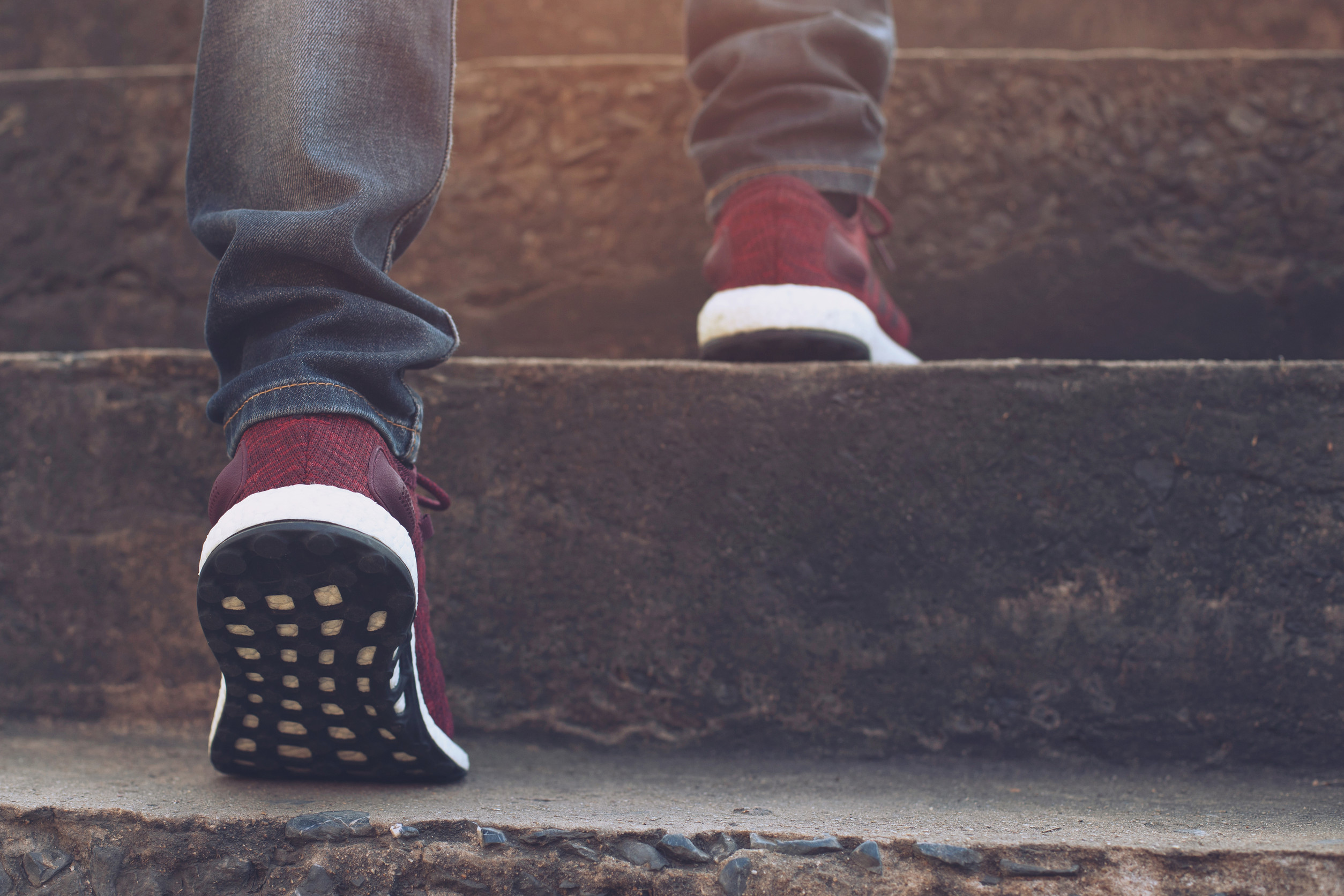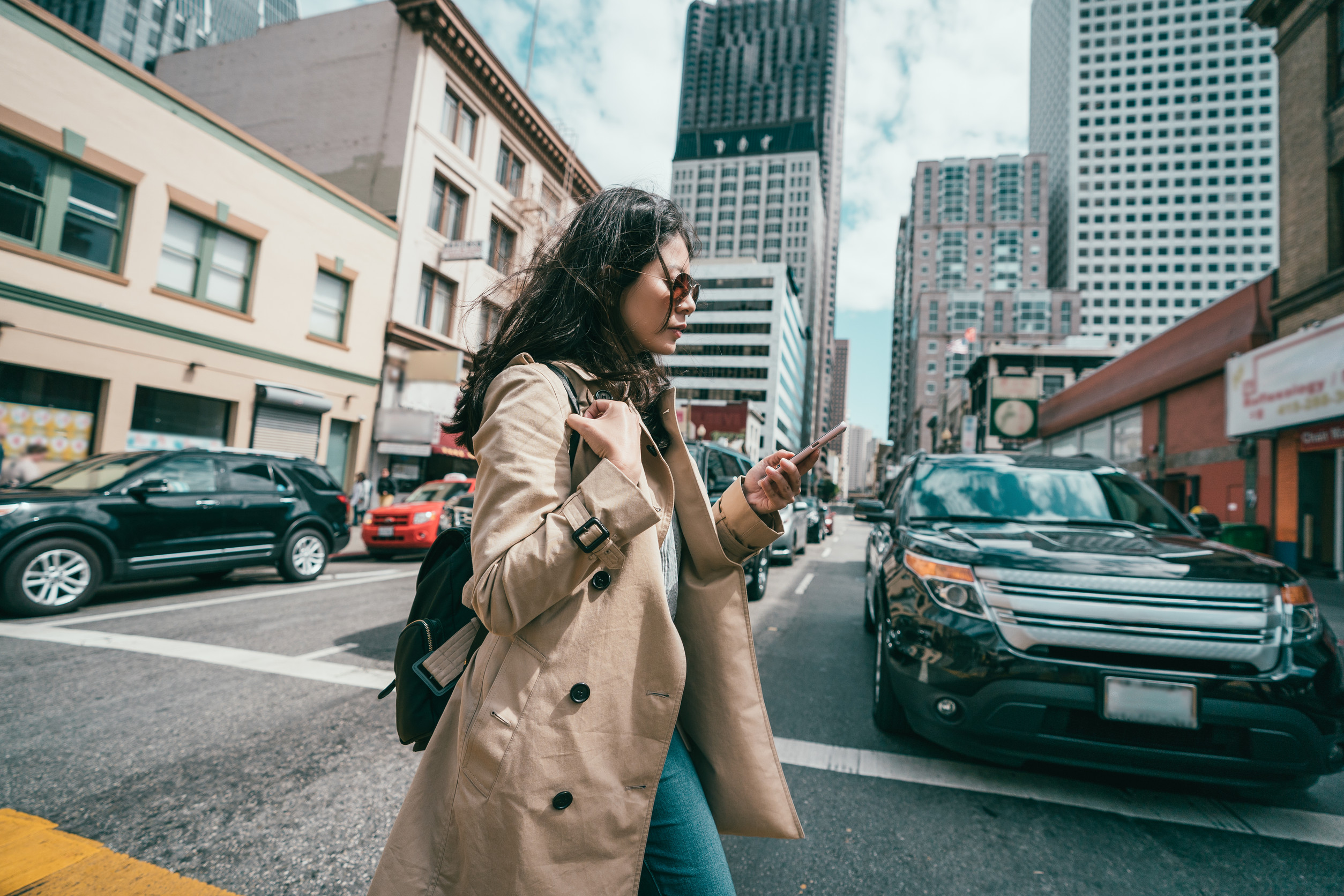
Walking seems like the safest thing anyone can do. But predators—whether they’re thieves, harassers, or worse—watch for signs of vulnerability, and many people unknowingly display them. How someone moves, holds themselves, or even uses their phone can give off subtle cues that invite the wrong kind of attention.
In cities and quiet neighborhoods alike, the way someone walks can make them either forgettable or a potential mark. Understanding these habits is the first step to breaking them—and protecting yourself.
1. Looking Down While Walking
Keeping eyes glued to the ground is one of the most common signs of lowered confidence. It disconnects someone from their environment and limits awareness of what’s happening nearby. This posture signals insecurity and a lack of assertiveness, which some people interpret as vulnerability. Criminals look for those who appear unsure of themselves or lost in their own head. Walking with a steady gaze and scanning the surroundings instead gives a very different impression—one of control and presence.
2. Wearing Headphones at Full Volume
Blasting music through headphones makes it almost impossible to hear approaching footsteps, voices, or vehicles. It shuts out the environment completely, which makes a person far easier to surprise. This habit gives away that someone is deeply distracted and not paying attention to what’s happening around them. People who pose a threat look for those immersed in their own world, especially those who wouldn’t hear someone coming up behind them. Even if music is a must, lowering the volume or using only one earbud maintains a basic level of awareness.
3. Constantly Checking a Phone
Fiddling with a phone every few steps gives off the appearance of being overwhelmed, disoriented, or vulnerable. Whether texting, scrolling, or navigating with a map, it creates a distracted and defenseless posture. Someone buried in a screen is less likely to notice suspicious activity, which makes it easier for others to get too close without detection. It also advertises valuables—like a pricey smartphone—that could tempt opportunists. Keeping the phone out of sight and staying alert while walking sends a far stronger message of control.

4. Walking Without Purpose or Direction
Wandering aimlessly, pausing frequently, or looking uncertain about where to go can attract unwanted attention fast. People who don’t appear to have a clear destination often seem more approachable or easier to manipulate. That lack of focus can be mistaken for weakness, especially in unfamiliar areas or during late hours. Confident movement, even when unsure, signals decisiveness and reduces the chance of being singled out. It’s about projecting purpose, not perfection—just walking like someone who knows exactly where they’re headed.
5. Slouching or Shrinking Body Language
Slumped shoulders, crossed arms, and inward posture can scream low confidence and emotional discomfort. Body language like this often signals someone is trying to avoid being noticed, which ironically draws more attention from those looking for easy targets. Predators read posture like a script—they know which people are likely to freeze under pressure. A straight spine, squared shoulders, and an open stance give off the impression of alertness and confidence. How someone carries themselves often says more than what they’re wearing or doing.
6. Not Noticing People Behind or Around
Failing to glance around regularly or ignoring what’s happening behind can lead to being followed without realizing it. It shows a lack of situational awareness, which makes someone easier to approach or ambush. People who never check their surroundings tend to react slower to threats and unexpected movement. A simple over-the-shoulder glance can communicate awareness and reduce the chance of being perceived as an easy mark. Staying mentally engaged with the environment changes the entire dynamic of a walk.
7. Walking in Isolated or Poorly Lit Areas
Taking shortcuts through alleys, deserted paths, or dimly lit streets often increases the chance of being targeted. These areas limit visibility and reduce the number of potential witnesses or people nearby who could help. Choosing these routes, especially at night or when alone, signals a risky comfort with unsafe surroundings. People looking to take advantage often wait in these spaces for someone walking alone and unaware. Safer walking habits include sticking to well-lit streets, walking near groups, and avoiding known trouble spots.
Walk Smart, Walk Safe
The way someone walks speaks volumes, often louder than words. It tells strangers whether they’re confident, distracted, or unsure of themselves. Small changes in posture, awareness, and behavior can significantly reduce the chances of attracting the wrong kind of attention. Staying alert, projecting confidence, and choosing safer paths isn’t about fear—it’s about control.
Have thoughts or experiences to share? Drop a comment below—what walking habits do you think matter most?
Read More
10 Public Safety Programs That Are Failing Where It Matters Most
6 Types of Protests That Are Too Dangerous For You To Get Involved
The post 7 Walking Habits That Make You Look Like an Easy Target appeared first on Everybody Loves Your Money.







